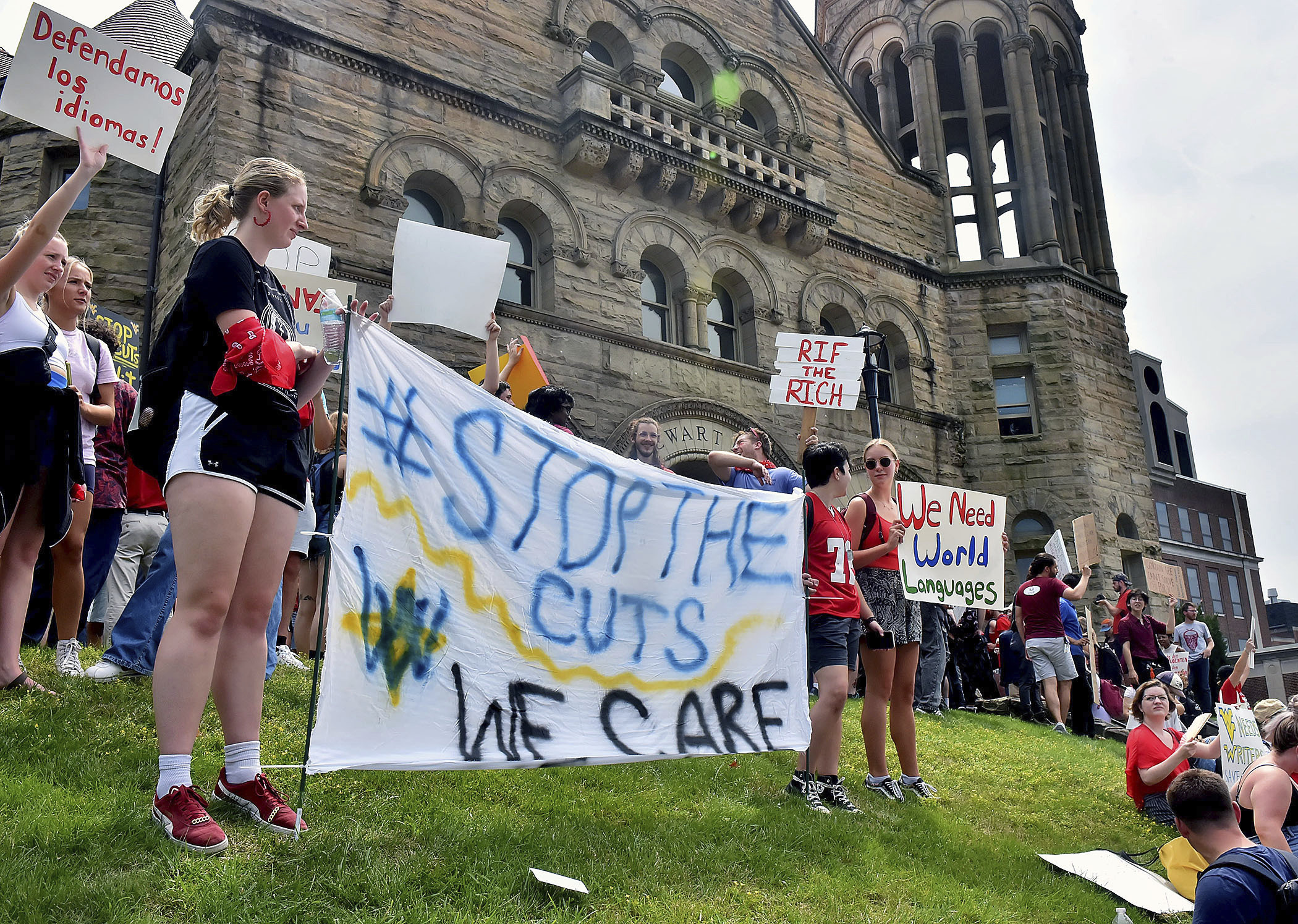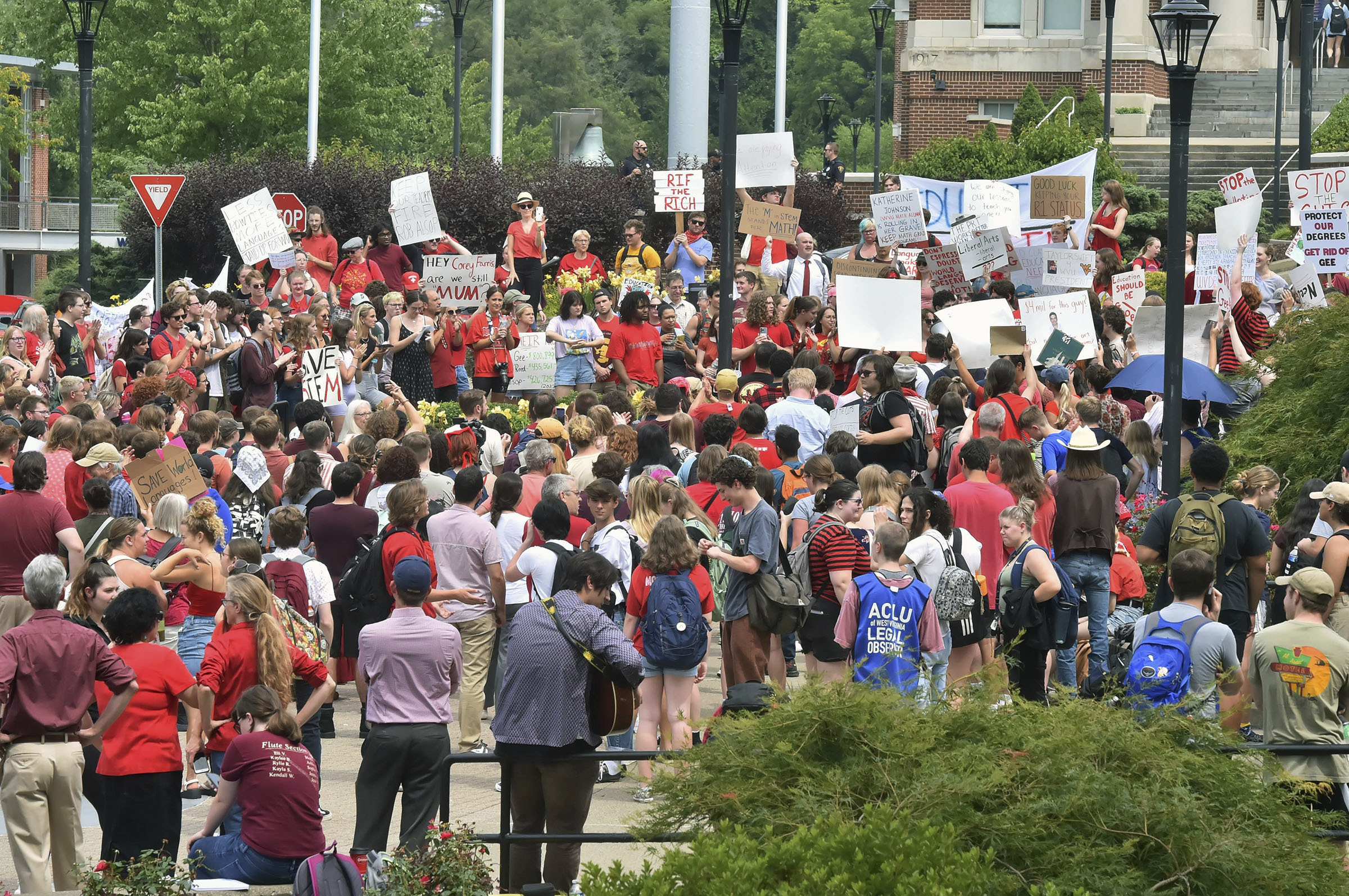
WVU removing executive position
West Virginia University will eliminate a single administrative position as the university continues to face pushback for its plan to cut 32 academic programs and 169 faculty positions.
Chris DeBord, WVU’s vice president of talent and culture, will retire later this year and the position will not be refilled, the university announced Tuesday. The talent and culture unit will then be reorganized to “align and better serve the university community.”
Mr. DeBord earned a $275,000 salary in 2018, per records obtained by The Daily Athenaeum, WVU’s student newspaper. WVU currently employs eight vice presidents among 37 university leaders.
The decision to eliminate Mr. DeBord’s position comes as students and faculty members are heated over WVU’s so-called “transformation,” a term the university has used to describe changes that it’s implementing as it battles a $45 million deficit.
On Aug. 12, less than two weeks before the fall 2023 semester began, WVU officials recommended eliminating 32 academic programs, merging 15 others, and cutting faculty positions in 22 departments. If the cuts happen, WVU will completely eradicate its languages department, public administration department and mathematics doctorate degree.
Lisa Di Bartolomeo, a Russian studies professor at WVU, told the Post-Gazette that the recommendation to cut her entire department sent shockwaves among her colleagues.
“No one had anticipated this as a possible outcome,” Ms. Di Bartolomeo said. “It’s just unthinkable that our research 1, flagship, land-grant university would cut all [traditional] language ... and linguistics education.”
WVU President Gordon Gee defended the university’s transformation plans at a board of governors meeting on Tuesday.
“I want to reinforce that transformation is not a new concept for this university,” Mr. Gee said. “In my very first speech to the university in 2014, I talked about the need to be more efficient and streamlined. In 2016, I clearly stated we would need to overhaul everything — including academics. And in 2018, I said land-grant universities could win back the people’s favor by acting as the ‘people’s universities’ again.”
A majority of units have appealed the recommended cuts, the university reported.
If their appeals are unsuccessful, WVU’s board of governors will vote on their fate in September.
On Monday, hundreds of WVU students staged a walkout on campus to protest the cuts, which would directly impact 147 undergraduate students and 287 graduate students.
Some protesters pushed for WVU to slash administrative positions or salaries.
In the Tuesday news release, WVU officials said they’ve reduced more than 500 non-academic positions in the past decade to “streamline operations and maximize efficiencies.”
School officials have attributed the deficit to declining enrollment and higher employee costs.
Between fall 2013 and fall 2022, the Morgantown campus lost around 16% of its student body population, from 29,466 students to 24,741.
Budget concerns became heightened this spring when school officials learned that an increase in insurance premiums for public employees would inflate university costs by $10 million.
And, like universities across the Northeast, WVU faces inflationary troubles, enduring pandemic problems, a drop in the college-aged population and dwindling trust.
In Pennsylvania, Penn State University currently faces a $63 million debt that school leaders hope to balance by fiscal year 2025.
Financial concerns at University Park have brought on tuition increases, a hiring freeze and funding slashes.

